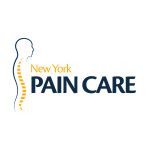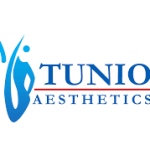
The Future of Onsite Healthcare: 7 Key Trends and Innovations for a Healthier Workforce
Workplace injuries and health issues are a huge problem for businesses in various industries, with almost $3 trillion lost annually due to downtime, workers’ compensation claims, and reduced productivity.
To alleviate the problem, more and more organizations turn to onsite healthcare as it offers immediate medical support and proactive health management right at the workplace. However, with time, the needs of the workforce have changed, and so too has the face of onsite healthcare.
In this blog post, we’ll explore some of the most important trends and innovations that will shape the future of onsite healthcare, as well as how these can benefit employers and workers alike.
H2: Why is Onsite Healthcare so Important?
From the physical demands of manual labor to the mental stress of high-pressure corporate jobs, there are numerous health issues employees encounter in the workplace, including:
- Workplace injuries
- Chronic conditions such as musculoskeletal disorders
- Mental health issues like anxiety and depression
As more companies recognize the benefits of having immediate access to medical care, the demand for onsite healthcare is rising.
This service helps employers address health concerns promptly, reduce downtime, and prevent minor issues from escalating. It also gives you peace of mind that employees remain healthy and productive, making it a win-win for everyone.
H2: Key Trends and Innovations Transforming Onsite Healthcare
Here are the seven trends and innovations that are actively transforming the onsite healthcare field:
1. Telemedicine Integration
Thanks to telemedicine, employees can reach out to healthcare providers via video calls, chat, or phone consultations. This is great for companies with remote or dispersed workforces where onsite care might not be easily available.
With access to timely consultations, diagnoses, and even prescriptions right at their fingertips, employees no longer need to pay in-person visits. This saves lots of valuable time and ensures that workers receive the attention they require wherever they are.
2. AI and Predictive Analytics
AI can detect trends and forecast possible health hazards by examining vast databases, which enables proactive interventions.
Predictive analytics, for instance, can estimate the risk of workplace injuries based on an employee’s job role, work environment, and health data. It also enables you to put in place specialized health programs and safety measures, which lowers the chance of accidents and raises workplace safety standards overall.
3. Mental Health Support
The demand for mental health support has increased in the post-pandemic period as more employees recognize that mental well-being helps them reduce stress and anxiety.
Companies are integrating mental health support into their onsite programs, offering services such as counseling, stress management workshops, and mental health screenings. In turn, this leads to a more supportive and productive work environment.
4. Wearable Technology
Employee health data (such as vital signs, physical activity, and stress levels) can be monitored in real time thanks to wearable activity trackers and smartwatches.
This data can be used to provide personalized health insights, alert employees to potential health issues, and enable early intervention. For example, wearables can identify exhaustion or dehydration and notify workers to take a break or drink more fluids before symptoms appear.
5. Mobile Health Units
Mobile health units are like clinics on wheels – they are equipped with the needed technology and manned by medical personnel. Their aim is to offer easy access to healthcare as they are located right on the job site.
For businesses like construction or manufacturing, where employees might not have easy access to off-site medical facilities, mobile health units are quite helpful. An example of such facilities could be Vega device by Sensonica, capable of quick recovery of joint and muscle injuries. As a result, fewer lengthy off-site visits are required, allowing staff members to receive care without interfering with their workday.
6. Virtual Reality (VR) for Training and Rehabilitation
In onsite healthcare, VR can be utilized to provide realistic training experiences that prepare staff members for real-life risks without putting them in actual danger.
Virtual reality is also utilized in rehabilitation programs to aid in the faster recovery of injured workers. For example, it can direct physical therapy exercises, improving the effectiveness and engagement of the rehabilitation process and allowing employees to get back to work sooner.
7. Personalized Health Programs
Personalized health programs leverage data from wearable devices, health screenings, and predictive analytics. This enables them to address specific health risks, dietary needs, and fitness goals.
These programs can also be modified to accommodate changes in the lifestyle and health of staff members. In this manner, workers get the most relevant and effective support, leading to better health outcomes and overall satisfaction.
The Benefits of Adopting Advanced Onsite Healthcare Solutions
Investing in advanced onsite healthcare solutions offers numerous benefits for employers, including:
- Cost savings: By reducing workplace injuries and chronic health issues, companies can lower their workers’ compensation claims and healthcare costs. Onsite healthcare also reduces absenteeism by providing immediate care, which keeps employees at work and productive.
- Employee retention and attraction: A robust onsite healthcare program can enhance employee retention and attract top talent as employees value companies that prioritize their health and well-being.
- Enhanced safety culture: When employees know that their health is a priority, they are more likely to engage with safety programs and practices, leading to fewer injuries and a more engaged workforce.
Implementing Onsite Healthcare: Key Considerations for Employers
To successfully implement onsite healthcare, employers must carefully consider their workforce’s unique needs.
- Assessing workplace needs: Analyze the types of injuries and health issues most common in your industry and the demographics of your employees.
- Choosing the right partners: It’s crucial to partner with experienced onsite healthcare providers who understand your industry’s challenges. Look for providers who offer a comprehensive range of services, from telemedicine to mobile health units, and who have a proven track record of success.
- Long-term strategy: Finally, develop a long-term strategy for onsite healthcare that aligns with your broader business goals. This strategy should be flexible so you can adjust it as your workforce and healthcare needs evolve.
Final Thoughts
The future of onsite healthcare is promising as the latest trends and innovations are revolutionizing how we approach workplace health.
By staying ahead of these developments, employers can create safer, healthier work environments that benefit both their employees and their bottom line.
If you’re ready to explore how advanced onsite healthcare solutions can transform your workplace, consider partnering with established onsite healthcare providers to ensure your workforce is always in top health.








